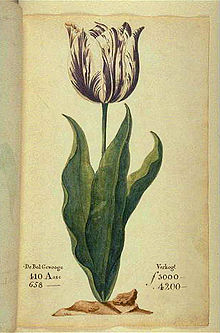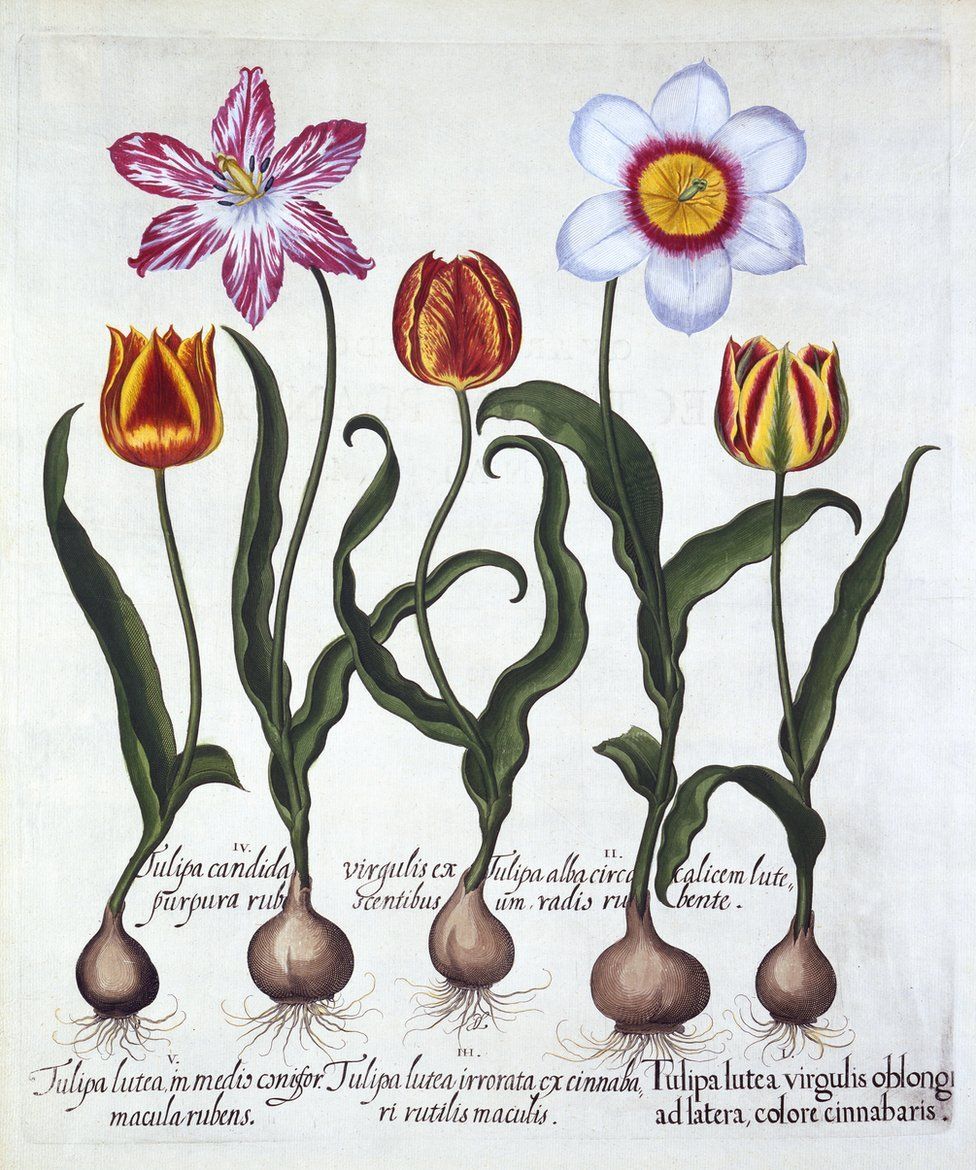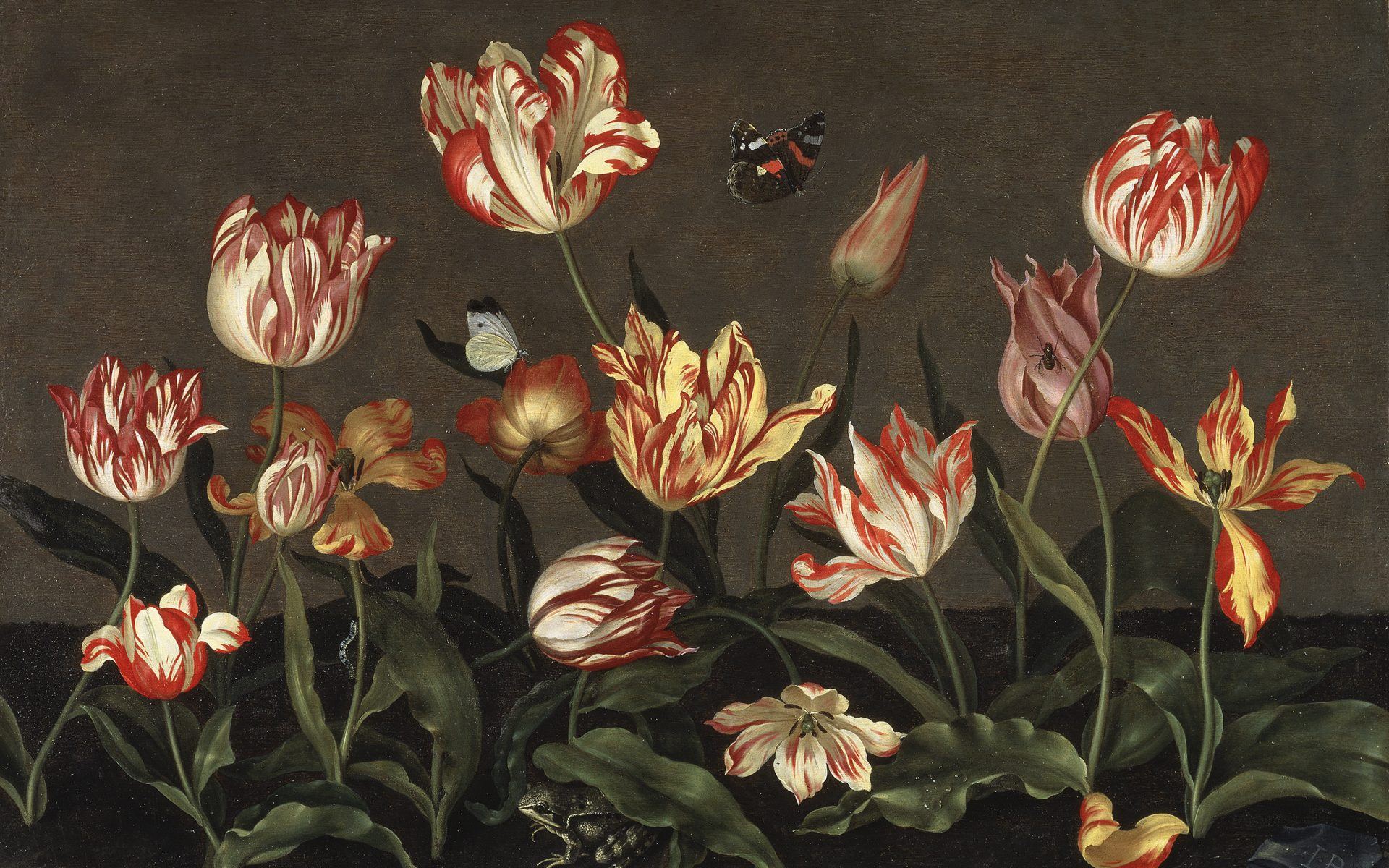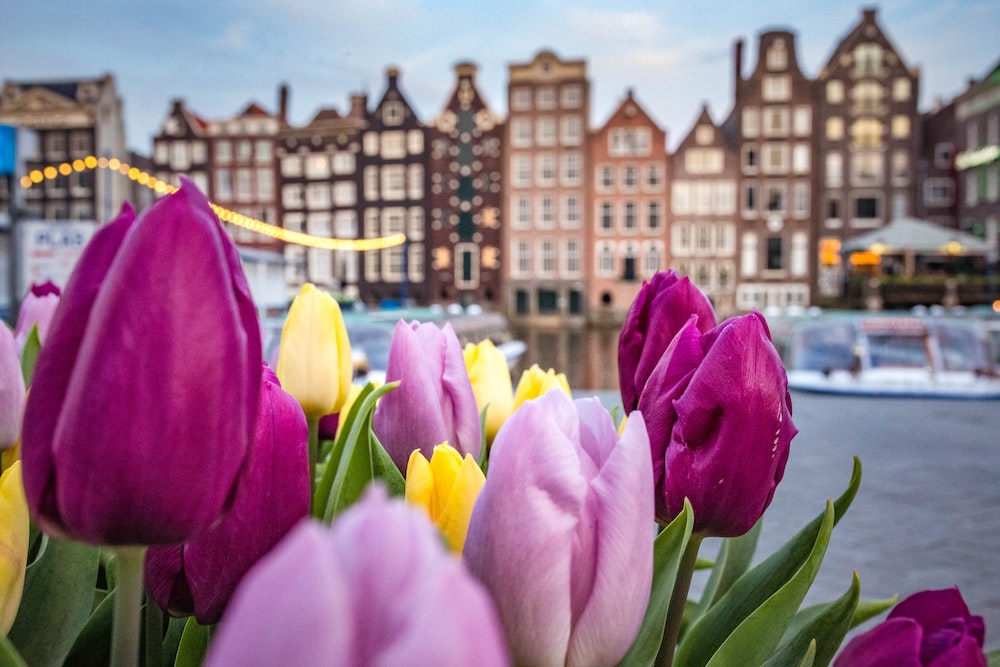The Alluring Tulip: A History of Beauty, Mania, and Enduring Appeal

The tulip, with its vibrant colours and elegant form, holds a unique place in the history of flowers. More than just a beautiful bloom, it has been a symbol of wealth, luxury, and even madness, captivating societies for centuries. This article delves into the history of the tulip, exploring its origins, its infamous role in "Tulip Mania," and its lasting legacy as a beloved flower.
From the Mountains of Central Asia to the Gardens of Europe:
The tulip’s journey began far from the manicured gardens of Europe. Its roots lie in the mountainous regions of Central Asia, specifically in areas like the Tian Shan Mountains. Wild tulips, smaller and less flamboyant than their modern counterparts, thrived in these harsh environments. These early tulips were appreciated by the nomadic peoples of the region, who likely collected and cultivated them.
The precise route of the tulip’s westward migration is somewhat unclear, but evidence suggests that the Ottoman Empire played a crucial role. The Turks, known for their love of gardens and flowers, cultivated tulips extensively. They called them "lale," and the flower became a symbol of the Ottoman Empire, adorning textiles, ceramics, and even official documents.
Sultan Suleiman the Magnificent, a powerful and influential ruler, was particularly enamoured with tulips. He commissioned lavish gardens filled with these blooms, further elevating their status within Ottoman society. It was during this period that the tulip began to resemble the flower we recognize today, thanks to selective breeding and cultivation.
Arrival in Europe and the Rise of "Tulip Mania":
The tulip’s arrival in Europe is generally attributed to Carolus Clusius, a renowned botanist who was appointed director of the Hortus Botanicus in Leiden, Netherlands, in 1593. Clusius received tulip bulbs from his friend, Ogier Ghiselin de Busbecq, the Austrian ambassador to the Ottoman Empire.
Clusius planted these bulbs in the Hortus Botanicus, marking the tulip’s introduction to Western European horticulture. Initially, Clusius was interested in the tulip’s scientific value rather than its commercial potential. He studied its characteristics and meticulously documented its growth. However, his tulips soon attracted the attention of the wealthy and curious, who were captivated by their exotic beauty.
As demand for tulips grew, so did their price. This was further fueled by the emergence of "broken" tulips, varieties with striking, flame-like patterns on their petals. These unique patterns were caused by a virus called the Tulip Breaking Virus, which, ironically, was highly sought after. These "broken" tulips were considered rare and highly desirable, commanding astronomical prices.
This escalating demand led to a speculative frenzy known as "Tulip Mania." By the 1630s, the price of tulip bulbs had reached unprecedented levels. People traded houses, land, and fortunes for single bulbs of rare varieties like "Semper Augustus" and "Viceroy." The market became detached from reality, driven by pure speculation and the fear of missing out on a lucrative opportunity.

The peak of Tulip Mania occurred during the winter of 1636-1637. At this point, the price of a single tulip bulb could exceed the cost of a house in Amsterdam. People from all walks of life, from merchants and nobles to farmers and artisans, participated in the tulip trade, hoping to get rich quickly.
The Crash and its Aftermath:
The bubble of Tulip Mania was unsustainable. In February 1637, the market suddenly collapsed. Prices plummeted, leaving many investors bankrupt. Fortunes were wiped out overnight, and the Dutch economy suffered a significant shock.
The causes of the crash are complex and multifaceted. Some historians attribute it to a combination of factors, including market manipulation, overspeculation, and a loss of confidence in the tulip market. Others point to the inherent instability of speculative bubbles, which are prone to bursts when the underlying asset’s value is not supported by fundamentals.
The aftermath of Tulip Mania was devastating for many. While the Dutch economy eventually recovered, the event served as a cautionary tale about the dangers of speculation and the irrationality of markets. It became a symbol of speculative bubbles and the risks associated with investing in assets with inflated values.

The Tulip’s Enduring Appeal:
Despite the dramatic events of Tulip Mania, the tulip’s popularity endured. The flower continued to be cultivated and appreciated for its beauty, and its cultural significance remained strong.
Today, the Netherlands remains the world’s leading producer of tulips. Millions of tulips are grown and exported each year, bringing colour and beauty to gardens around the globe. The Keukenhof Gardens in the Netherlands, a vast display of tulips and other spring flowers, attracts visitors from all over the world.
The tulip has also inspired artists, writers, and designers throughout history. Its elegant form and vibrant colours have been captured in paintings, poems, and decorative arts. The flower continues to be a popular subject for artists and photographers, who are drawn to its timeless beauty.
FAQ about Tulips:

What is the origin of the name "tulip"? The name "tulip" is believed to be derived from the Turkish word "tülbent," which means turban. This is likely due to the flower’s resemblance to a turban.
What causes the "broken" patterns in some tulips? The broken patterns are caused by the Tulip Breaking Virus, a type of potyvirus. While the virus creates visually striking patterns, it also weakens the plant.
Are tulips edible? While tulip petals are technically edible, they are not particularly palatable. The bulbs are toxic and should not be consumed.
How do you care for tulips? Tulips require well-drained soil and plenty of sunlight. They are typically planted in the fall for spring bloom. After flowering, the foliage should be allowed to die back naturally to nourish the bulb for the following year.
What are some popular tulip varieties? Some popular tulip varieties include ‘Apeldoorn’, ‘Queen of Night’, ‘Parrot King’, and ‘Triumph’.
Where is the best place to see tulips in bloom? The Netherlands is the best place to see tulips in bloom, particularly at the Keukenhof Gardens. Other locations include gardens and botanical parks around the world.
What is the symbolism associated with tulips? Tulips have different symbolic meanings depending on their colour. Red tulips often symbolize love and passion, while yellow tulips can represent cheerful thoughts and sunshine. Purple tulips are often associated with royalty and elegance.
Are tulips perennials? Tulips are technically perennials, meaning they can live for more than two years. However, many modern tulip varieties are grown as annuals, as they may not bloom reliably in subsequent years.
What is the difference between species tulips and hybrid tulips? Species tulips are the wild, original forms of tulips, while hybrid tulips are the result of cross-breeding different varieties to create new colours, shapes, and sizes.
Why were tulips so expensive during Tulip Mania? The high prices were driven by speculation, rarity, and the desire for unique "broken" varieties. The market became detached from the actual value of the bulbs.
Conclusion:
The tulip’s story is a captivating blend of beauty, history, and human folly. From its origins in the rugged mountains of Central Asia to its reign as a symbol of wealth and status in Europe, the tulip has left an indelible mark on the world. While "Tulip Mania" serves as a stark reminder of the dangers of speculative bubbles, the tulip’s enduring appeal as a beloved flower remains undiminished. Its vibrant colours, elegant form, and rich history continue to captivate and inspire, ensuring that the tulip will remain a cherished symbol of spring and beauty for generations to come. Its story is a reminder that even the most beautiful things can be subject to the whims of the market and the irrationality of human behaviour, but also that true beauty transcends fleeting trends and speculative bubbles. The tulip, therefore, stands as a testament to the enduring power of nature and the complex relationship between humans and the natural world.
